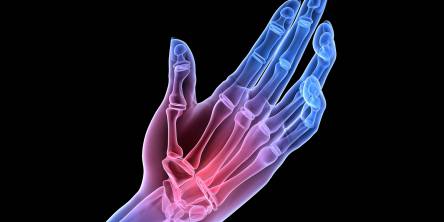9 Reasons You May Want an Appointment With a Foot Doctor

Chronic medical conditions such as diabetes or arthritis can cause foot and ankle problems, but even commonplace factors such as overuse or inappropriate footwear can cause pain in your feet. A podiatrist is a doctor who specializes in the diagnosis, treatment, and prevention of ailments and injuries involving the foot and ankles. Podiatrists provide a wide range of medical treatments for foot and ankle problems. They do surgery as well as diagnose and treat patients using conservative methods. The following are ten reasons to consult a podiatrist:
1. You have diabetes Diabetes greatly increases your risk of developing foot disorders. Diabetes raises the likelihood of getting ulcers and lesions that can become infected and can even result in loss of sensation in your feet. An experienced foot doctor should examine your feet at least once yearly if you have diabetes. Studies show that visiting a podiatrist regularly greatly reduces the risk of amputation due to diabetes complications.
2. You struggle with heel pain
Heel pain can have a multitude of causes. You can have a heel spur, which is a bony protrusion on the heel. On the other hand, the heel's connecting tendon could be irritated. Consult a podiatrist for a diagnosis if your heel pain lasts too long. Making an accurate diagnosis is the fundamental step in creating a proper treatment strategy.
3. You have ingrown toenails
An infection might develop if one of your toenails becomes ingrown. This usually happens on big toes. A foot doctor can treat your toe if it is extremely red or starts to release pus. A portion of the nail may occasionally need to be removed. If the area is infected, your doctor may recommend antibiotics and may also suggest ways to stop an ingrown nail from recurring.
4. You’ve started running for exercise
Foot or ankle injuries or conditions are quite prevalent among those who are physically active. More specifically, shin splints and associated aches and pains are particularly common in runners. A podiatrist can examine your feet to identify any possible issues and offer preventative measures. Additionally, they can suggest the appropriate shoes for your foot type.
5. You have painful symptoms in your feet or ankles
The disease known as arthritis has an impact on the long-term health and functionality of joints. Your feet may have swollen, red, stiff, or sore joints due to arthritis. Disability can also result from arthritis, which can alter how the feet function. A podiatrist can recommend treatment options that can maintain joint health and increase your ability to perform regular tasks.
6. You think you might have injured your foot or ankle
Sprains, strains, and fractured bones in the foot or ankle are among the conditions that podiatrists are skilled at treating. They can identify your injury and provide effective treatments. Visit a podiatrist if you have swelling, difficulty walking, redness, or worsening pain due to an injury.
7. You require foot surgery
Surgery is typically the last line of treatment recommended by a podiatrist. Bunions, hammertoes, recurring ingrown toenails, and fractured bones are some of the conditions that may necessitate a minimally invasive foot surgery.
8. You keep getting bothersome corns or calluses
Some of the most frequent reasons patients visit foot doctors are corn and calluses. These built-up skin regions can hurt like walking on fire. Your doctor will usually use a surgical blade to reduce them in size. To help you avoid corns and calluses in the future, a podiatrist may advise wearing shoes that are appropriately sized, as well as padding and using skin softener.
9. You have a bunion that hurts
A bump at the base of the big toe is known as a bunion. This problem happens when the big toe's bones or joints have shifted and are now misaligned. If bunions are not treated, they often worsen. Treatment options from a podiatrist may include padding, taping, or medications. In serious situations, surgery is another possibility.
Similar Articles
Veins on the skin that produce swelling may indicate varicose veins. Varicose veins are a vein disorder, and their role is to return blood from the leg to the heart. The specific cause of varicose veins, a prevalent condition, is unknown.
A healthy spine is the foundation of a functioning body. It supports your frame while allowing you to bend, flex, and move more freely. However, most people neglect the importance of spine health until they have a back condition.
Whether you're having trouble moving body parts or experiencing worsening joint discomfort, an orthopedic doctor can help. They can treat anything from a minor strain to complex treatments such as shoulder replacement. The appropriate treatment from an orthopedic expert at the right time might relieve your pain and improve your symptoms in less time.
When it comes to trauma, professionals in the mental health sector readily admit that no single style of therapy or intervention is appropriate for every case or individual.
Rheumatoid arthritis (RA) is a type of autoimmune disease that occurs when the body's immune system attacks the lining of joints, causing inflammation and causing symptoms like pain and stiffness. RA usually affects both sides of the body in a similar way, but small joints of the hands and feet are often affected first, often knuckle joints of the fingers.
An electroencephalogram (EEG) is a test that measures the electrical activity in the brain. Healthcare experts utilize it to evaluate and comprehend neurological illnesses, sleep disorders, and brain damage.
So, your back decided to stage a mutiny and gift you with a herniated disc. Lovely. Now what? If you’re imagining a future filled with endless discomfort and groaning every time you get out of bed, don’t fret. There are plenty of ways to tackle a herniated disc and get back to living your best, pain-free life.
Back pain – it’s not just a matter of “I lifted a heavy box, and now my back hurts.” It’s often the result of a complex dance between our minds and bodies, with stress, anxiety, and emotions playing lead roles. If you’ve ever woken up with a stiff back after a tough week or felt your spine twinge just from reading a long email chain, you’re not alone.
Chronic pain is a medical problem that affects many people around the world. Unlike acute pain, which is a short-term response of the body to tissue damage, chronic pain lasts longer, often without obvious physical damage. It can last from several months to several years, and its consequences can affect all aspects of a person's life









